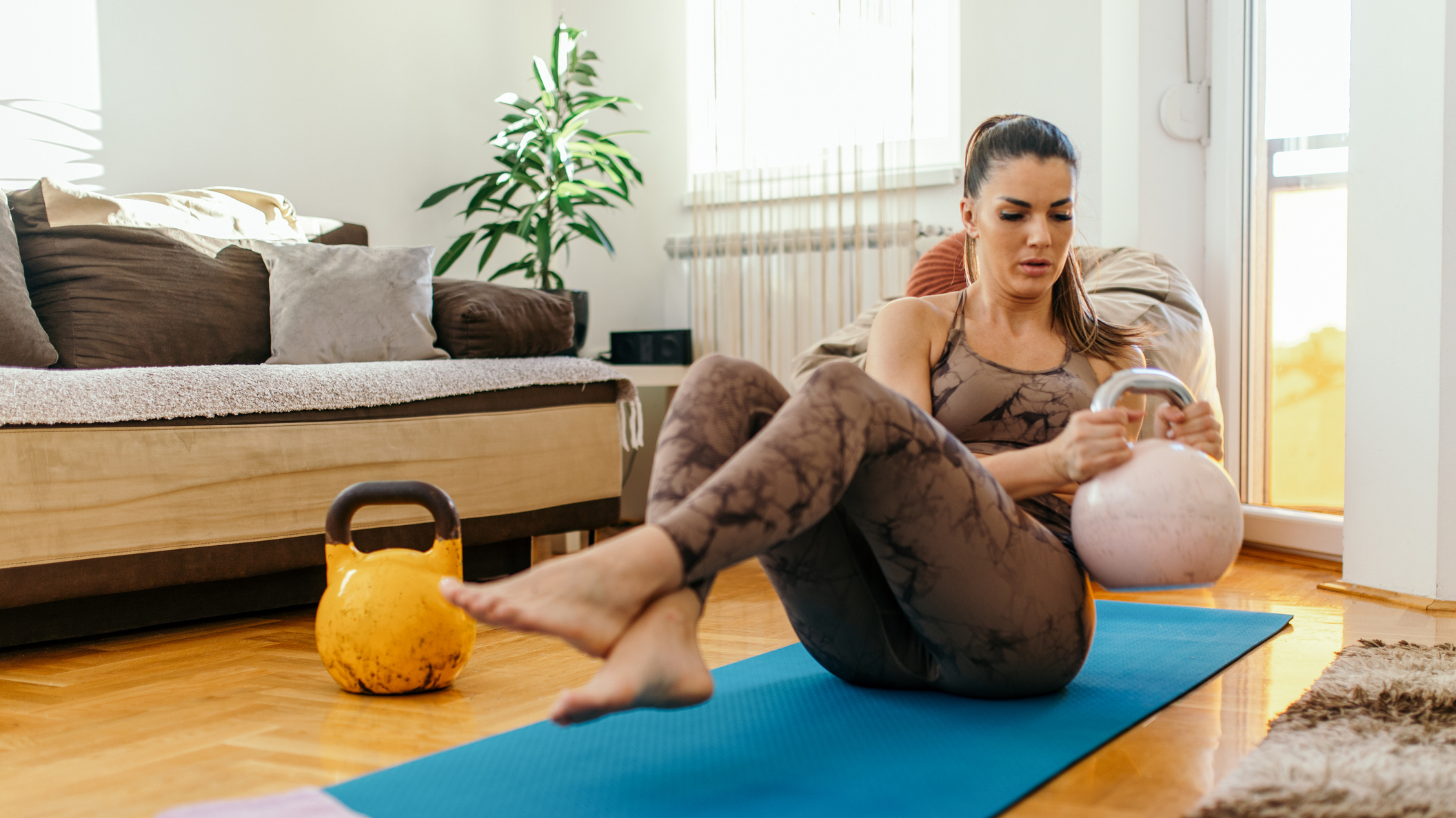
The core is one of the most important muscle groups in the entire body. It impacts the way you move in everyday life and a stronger core can help to reduce back pain and improve your posture. These muscles also come into play in optimizing sports performance and different styles of training.
With this in mind, it’s a good idea to treat core training like other strength workouts and use weights to fire up your muscles and build strength. “Bringing weight into core exercises adds an extra challenge and increases the load on the body,” says personal trainer Tess Glynne-Jones.
Glynne-Jones recently shared a workout on Instagram with three kettlebell exercises designed to target the midsection. “You can start by doing all of these movements with your bodyweight and to progressively add load over time,” says Glynne-Jones. “Rather than adding loads of reps and increasing volume, especially if we want to make a workout more strength-focused, it’s a good idea to think about how much weight you can lift rather than how long you can move for.”
Take a look at Glynne-Jones’ Instagram Reel where she demonstrates each exercise. She’s also shared some form tips exclusively with Coach.
The first move is a tall plank transfer (often called a plank drag) for 16 reps and three rounds. “The main thing here is to make sure your hips aren’t moving, so try to fight rotation,” says Glynne-Jones. “Push the floor away with your hands when you’re in your tall plank and make sure the pelvis is tucked under so that your lower back doesn’t arch. Try and keep your hips square and don't be afraid to choose a heavy weight for this exercise.”
The next exercise is a Russian twist—an oblique exercise you might have come across before. Go for 20 reps and three rounds. “Start with no weight and once you feel like you can perform the movement well enough, bring some load in," says Glynne-Jones, adding that you should be able to do this exercise confidently with weight before lifting your feet off the floor.
The final exercise is a pull-over. “I love these because they help to target the lats, and work the shoulders and upper body, as well as the entire core,” says Glynne-Jones. “Control the position of your spine and pelvis—your core should be working hard to keep you in a neutral position. Think about pulling your belly button towards your spine, then up and underneath your ribcage, and try not to let your lower back arch.”
Glynne-Jones also recommends starting without a weight for this exercise. Once you can move through the reps without arching your back then you can do it with a weight.
These are exercises to come back to regularly, gradually increasing the load over time. You can do it as a core-focused finisher or as standalone moves incorporated into your regime. Follow the principles of progressive overload and it will eventually lead to increased muscle mass and strength in your core.







